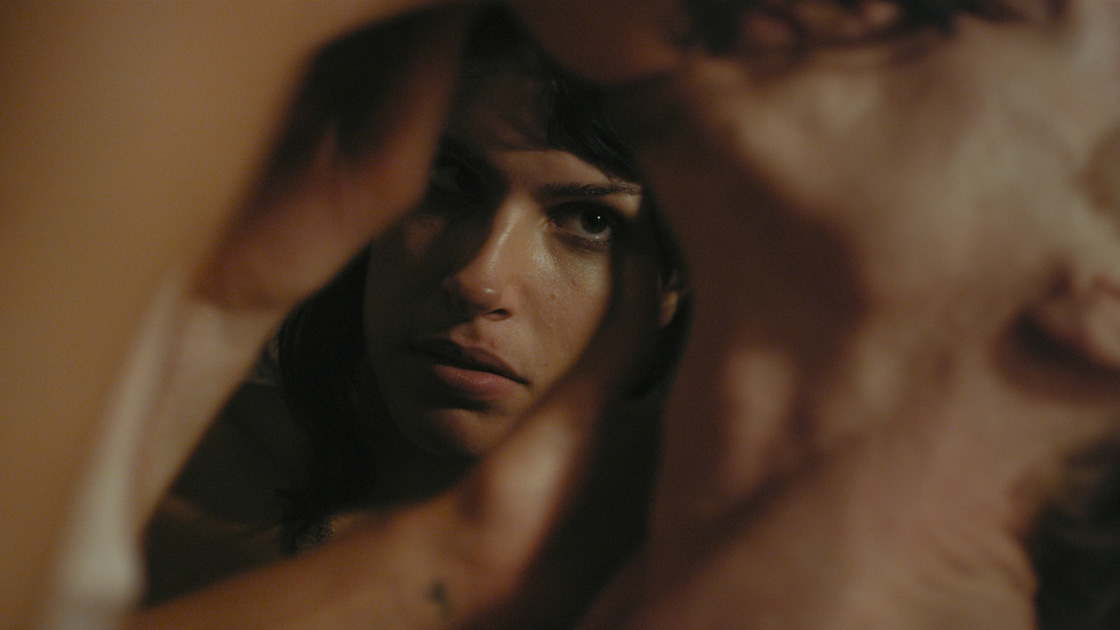In an industry where LGBTQ+ characters have historically been treated as tropes, plot devices and stereotypes, it seems as though an effort has been made to change the way LGBTQ+ characters are presented on our screens. In recent years particularly, with television programmes such as Orange is the New Black and films like Call Me By Your Name, lesbian and gay relationships have been represented on screen explicitly and poignantly, but without having the characters purely defined by their sexuality. However, whilst this push for representation is encouraging, there still seems to be an absence of bisexual characters on both the small and big screen.
In 2016, sitcom Brooklyn Nine-Nine released its ninety-ninth episode, where one of the leading characters, Rosa Diaz, explicitly states “I’m dating a woman. I’m bi,” and this is one of the only instances I can think of where a character directly references their bisexuality. This isn’t to say that there aren’t bisexual characters on television. On the contrary, programmes like Glee, Game of Thrones, How to Get Away with Murder and Jane the Virgin are just some which feature bisexual characters. However, there still seems to be a disparity between bisexual representation and gay/lesbian representation, a confounding absence which hinders the push for better representation of different sexualities. Furthermore, the use of bisexual characters as plot devices, or representation of bisexuals as promiscuous villains, is a harmful trend that has featured on programmes throughout the years, treating bisexual characters as drivers of plot, rather than genuine characters. This not only undermines the potential for character depth but also diminishes the positivity of increasing bisexual representation, which is sparse already and hindered further by such negative depictions.
While it certainly isn’t necessary for characters to state their sexuality, the lack of bisexual representation on our screens, and the stigma surrounding bisexuality, is one that is important to draw attention to.
While characters shouldn’t be defined by sexuality, it seems as though there is a stigma around the word bisexual itself, one which probably isn’t helped by the lack of explicit representation of it on our screens. What further emphasises this absence is the lack of bisexual characters we see in film. Although the statistics for the exposure of lesbian and gay relationships on screen are improving, in film, there is even less bisexual representation than on television and even fewer characters who explicitly call themselves bisexual. While it certainly isn’t necessary for characters to state their sexuality, the lack of bisexual representation on our screens, and the stigma surrounding bisexuality, is one that is important to draw attention to.
Similarly to on television, bisexuality on the big screen often feels like it has to be explained, is presented in a negative way or is brought about under negative circumstances. For example: the character justifying bisexuality by having a midlife crisis or is seen to be going through “a phase.” This negative and ignorant kind of representation is one that can also be linked to gender, as female bisexuals are portrayed much more than male bisexuals on our screens. This suggests a wider, harmful problem, as it infers that female bisexuality sells more because it is perceived as sexier than male bisexuality, and thus highlights an intolerance towards male bisexuality in our society and yet another justification for the objectification of women. It is important to draw attention to this distinct lack of bisexual representation, as it shows an unwillingness to present bisexuality as its own valid sexuality. This demonstrates how negatively portraying bisexuality as “a phase” can be harmful, as it warps people’s perception of bisexuality and negates its validity. While this is not always the case in television programmes and films, this kind of depiction is still being used, and is something which needs to be changed.
It is important to draw attention to this distinct lack of bisexual representation, as it shows an unwillingness to present bisexuality as its own valid sexuality.
As it is LGBTQ+ history month it is necessary to highlight the need for representation for all members of this community on our screens. While there is a notable absence of bisexual characters in television and film, it can only be seen as hopeful that we are already in the midst of so many changing attitudes within the industry. With an ever-increasing push for diversity, it is important to acknowledge the way LGBTQ+ people are being represented on screen, and make sure that all types of sexualities are being represented properly and not being stereotyped or undermined.
Lucy Carr
Image credit: Filmmaker Magazine

